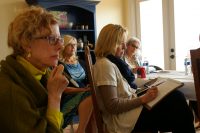 It was a stimulating and inspirational day at our most recent salon in Cardiff-by- the-sea (or so I’m told). I was thrilled that a couple of repeat attendees said they got even more out of this one than the earlier ones. Apparently, we are improving over time, so that’s great to hear. As usual, I keep the salon small so it is an intimate and personal day, which allows the attendees to get to know each other and also ask questions of the authors in between sessions.
It was a stimulating and inspirational day at our most recent salon in Cardiff-by- the-sea (or so I’m told). I was thrilled that a couple of repeat attendees said they got even more out of this one than the earlier ones. Apparently, we are improving over time, so that’s great to hear. As usual, I keep the salon small so it is an intimate and personal day, which allows the attendees to get to know each other and also ask questions of the authors in between sessions.
We had four speakers, three of whom are bestselling authors—Susan Carol McCarthy, Steve Jackson and me, Caitlin Rother—and one is a three-time Pulitzer-winning editor, Susan White. The speakers delivered four sessions, gave one-on- one critiques during the breaks, then talked as a panel about various aspects of long-form journalism and publishing—indie, digital, traditional and self-publishing. Then we all broke for a cocktail party that ended the day on a celebratory note with wine, hors d’oeuvres and live music, (although the celebrating actually began when a few bottles of wine were uncorked before the panel discussion).
Here is some of the positive feedback I received that I am proud to share:
“The salon is where writers can share ideas and understand what it takes to get good stories in front of interested readers. I like it because of the camaraderie we shared. Having a face-to-face conversation rather than something over the internet is so much more impactful. I came away with great ideas for proceeding with my own writing project.” — Irene McCormack Jackson of San Diego
“I write for a living and have had a lot of training, but I didn’t know ANY of the things I learned here today!”
“It was great to also have a speaker who was not an author, but such an experienced journalist. Made for a good mix.”
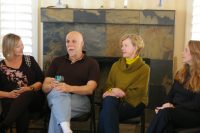 We had the videocamera running during the four speaker sessions, and also during the panel discussion, each of which ran a full hour. If you are interested in purchasing copies of the video (we can discuss the best way, such as on DVD, thumb drive, or shared in Dropbox), please contact Caitlin Rother at crother@flash.net. If you would like to come to the next salon, also please contact Caitlin so she can put you on the mailing/invitation list for next time.
We had the videocamera running during the four speaker sessions, and also during the panel discussion, each of which ran a full hour. If you are interested in purchasing copies of the video (we can discuss the best way, such as on DVD, thumb drive, or shared in Dropbox), please contact Caitlin Rother at crother@flash.net. If you would like to come to the next salon, also please contact Caitlin so she can put you on the mailing/invitation list for next time.
Here’s a brief recap, outlining some of the points the speakers touched on:
Susan Carol McCarthy:
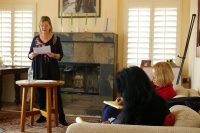 Susan, who has written three historical fiction novels after a long and successful career in advertising, talked about the five layers of personality traits that she envisions and creates to make her characters well-rounded and complex. Susan noted that you can do this yourself, but you can also find character worksheets online that can help you compile these characteristics. Much of this research and character building doesn’t end up in the book, but it helps you, as the author, to better tell the story through your character, so you know what he/she will do in any given situation. 1) The first layer is made up of fixed, unchangeable traits—the innate, the genetic download, such as ears that stick out—and how they cause pride or pain for the character. 2) This layer incorporates other areas such as diseases, religion, where the character went to school, his/her employment; society’s and the individual’s reaction to events, including the most painful one, and how it affects the person’s past or future plans. 3) Your character’s motivations, not all of which are trauma-based. What does he/she want, and more deeply, what does he/her really want, and what is the meaning of his/her life? The gradual shift from what the character says he wants to discovering what he really wants is what makes him an iconic character; for some, an outer desire may be in conflict with an unconscious desire. 4) Eccentricities make the character memorable. 5) The character’s voice, sight and sound. You know your character is fully formed once you hear him/her speak. The purpose of dialogue is to reveal character, convey motive and emotion, and move the story along.
Susan, who has written three historical fiction novels after a long and successful career in advertising, talked about the five layers of personality traits that she envisions and creates to make her characters well-rounded and complex. Susan noted that you can do this yourself, but you can also find character worksheets online that can help you compile these characteristics. Much of this research and character building doesn’t end up in the book, but it helps you, as the author, to better tell the story through your character, so you know what he/she will do in any given situation. 1) The first layer is made up of fixed, unchangeable traits—the innate, the genetic download, such as ears that stick out—and how they cause pride or pain for the character. 2) This layer incorporates other areas such as diseases, religion, where the character went to school, his/her employment; society’s and the individual’s reaction to events, including the most painful one, and how it affects the person’s past or future plans. 3) Your character’s motivations, not all of which are trauma-based. What does he/she want, and more deeply, what does he/her really want, and what is the meaning of his/her life? The gradual shift from what the character says he wants to discovering what he really wants is what makes him an iconic character; for some, an outer desire may be in conflict with an unconscious desire. 4) Eccentricities make the character memorable. 5) The character’s voice, sight and sound. You know your character is fully formed once you hear him/her speak. The purpose of dialogue is to reveal character, convey motive and emotion, and move the story along.
Steve Jackson, Narrative Structure
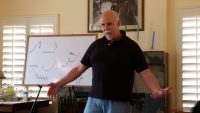 Steve presented a quick overview of how to conceptualize and build a book from the ground up, from formulating and focusing the idea, to creating the blueprint, setting the scene, developing characters, and putting these concepts into action. Steve discussed his very own “wave technique,” for presenting a series of actions as you build towards the climactic moment and resolution of your book, hooking readers at the start and keeping them reading until the end. He suggested that writers start with a yellow legal pad and start writing down an outline of the story, what makes it unique, the primary characters—and whose point of view you will use to help you tell the story—then lay out the scenes and settings. Eventually, you take your notes and transfer them to the computer to further develop your ideas, and, of course, write the book.
Steve presented a quick overview of how to conceptualize and build a book from the ground up, from formulating and focusing the idea, to creating the blueprint, setting the scene, developing characters, and putting these concepts into action. Steve discussed his very own “wave technique,” for presenting a series of actions as you build towards the climactic moment and resolution of your book, hooking readers at the start and keeping them reading until the end. He suggested that writers start with a yellow legal pad and start writing down an outline of the story, what makes it unique, the primary characters—and whose point of view you will use to help you tell the story—then lay out the scenes and settings. Eventually, you take your notes and transfer them to the computer to further develop your ideas, and, of course, write the book.
Caitlin Rother, Narrative Structure
Caitlin presented her “key moment” outlining approach to writing scenes, the building block of fiction and narrative non-fiction. Then she led the group through an exercise by using a real-life example that came up during discussion: a recent Carlsbad murder case. Caitlin’s system is to create a scene by coming up with a list of key moments, pivotal lines of dialogue, story threads and backstory facts as bullet points, which makes it easier to then move them around chronologically, weave them in, or save them for another scene, building to a climax and resolution. This is her version of a storyboard; other people may use index cards. This approach can be applied to create a story arc for individual scenes, chapters, and entire books.
Steve Jackson, Interviewing
Steve presented some of his tried and true interviewing techniques, including researching the subject beforehand. He also talked about the best place to sit or position yourself in relation to your subject—i.e. at the person’s home or office, versus a public place, because you can glean insight into the person from items on his/her walls or desk, which you can’t do in a coffee shop or restaurant. At the start of the interview, Steve suggested making small talk, taking an interest in what you see in the natural environment to get the ball rolling, then offering some insight into your writing and research process to make the subject feel more comfortable.
Caitlin Rother, Research
Caitlin and Steve both talked about the pros and cons of recording an interview, advising beginners to use a recorder to be accurate while they train their ears as they take notes, but cautioning against depending on it as a sole source in case it fails you. Caitlin talked briefly about obtaining permission to use photos (copyright and privacy law), then distributed a handout that outlined where to find a wide range of public records. She also led the group through an exercise on how to research a real-life topic for an attendee’s current project. The question was how to find information about a historic and legendary crime figure who was never actually convicted of a crime. Caitlin suggested going to that person’s small-town archives, whether it be the library, newspaper, and town clerk, and also interviewing family members and other local figures who can steer you to other people and sources. Some towns even have a tour guide of such historic people and places, who can serve as resources.
Susan White, Editing
Susan, who went from being a reporter and TV critic, to writing coach and then three-time Pulitzer-winning editor, gave advice on how to edit your own writing. Write first, then put on your editor’s hat to come back and do the rest, keeping the two processes separate so as not to “squelch your creativity.” She talked about two different types of editing: big-picture and small-picture editing, also known as macro and micro editing. She broke it down like this. For big picture editing, you should 1) think like a reader, 2) don’t lose your narrative thread, 3) keep the story moving by incorporating motion and emotion, and 4) test your work on outsiders—one way is to read your work to them and watch/listen for their reaction. For small picture editing, you should 1) trim extra words, 2) get rid of passive verbs, 3) kill your babies, which may be some of your favorite but, in the end, extraneous or off-point, sentences, paragraphs or sections, 4) find the music and movement, 5) use all your senses, 6) leave your work at the end of the day at a place where it’s going well, then start reading it the next day with pencil or pen in hand, 7) read your work aloud when you’re done, to check for spelling and grammar mistakes and to trim even more extraneous words. Susan and Caitlin then did a brainstorming session with the group to develop the threads of a real-life book idea, which in this case, was the case of former Republican House Speaker Dennis Hastert, who was recently convicted of violating the Bank Secrecy Act by paying hush money to one of his victims of serial child molestation—a man Hastert admitted to molesting when the boy was a teenager on the high school wrestling team that Hastert coached in Illinois.
Bios for each of the speakers:
 Susan Carol McCarthy is the award-winning author of three works of literary fiction, LAY THAT TRUMPET IN OUR HANDS, TRUE FIRES, and A PLACE WE KNEW WELL (Random House, October 2015) plus the non-fiction BOOMERS 101: THE DEFINITIVE COLLECTION. Her books have been widely selected by libraries and universities for their One Book, One Community and Freshman Year Read programs, and incorporated into school curriculums in 29 states and six countries. Although each of her novels was inspired by true historical events—a series of shocking race crimes, notoriously corrupt small-town politics, a week of military-imposed terror—McCarthy is best known for creating muscle- and-blood characters for whom the larger political becomes intensely personal, and for her original blend of “fact, memory, imagination, and truth with admirable grace.” (The Washington Post). www.SusanCarolMcCarthy.com
Susan Carol McCarthy is the award-winning author of three works of literary fiction, LAY THAT TRUMPET IN OUR HANDS, TRUE FIRES, and A PLACE WE KNEW WELL (Random House, October 2015) plus the non-fiction BOOMERS 101: THE DEFINITIVE COLLECTION. Her books have been widely selected by libraries and universities for their One Book, One Community and Freshman Year Read programs, and incorporated into school curriculums in 29 states and six countries. Although each of her novels was inspired by true historical events—a series of shocking race crimes, notoriously corrupt small-town politics, a week of military-imposed terror—McCarthy is best known for creating muscle- and-blood characters for whom the larger political becomes intensely personal, and for her original blend of “fact, memory, imagination, and truth with admirable grace.” (The Washington Post). www.SusanCarolMcCarthy.com
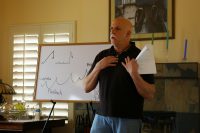 Steve Jackson is a New York Times bestselling author of true crime, crime fiction, history and biography. During a more than two-decade career as a newspaper journalist, he won numerous national and regional awards for writing, explanatory journalism and investigative journalism, and was particularly known for his interviewing technique and narrative style. His writing mentor was Jon Franklin, the two-time Pulitzer Prize winning author of Writing For Story, which is the basis for Steve’s Building A Better Book discussion with his own personal additions. He has written two dozen books, including a long-running thriller series under the name Robert K. Tanenbaum, as well as true crime bestsellers MONSTER, NO STONE UNTURNED and BOGEYMAN. He is also co-owner of indie publishing company WildBlue Press. https://dev.wildbluepress.com
Steve Jackson is a New York Times bestselling author of true crime, crime fiction, history and biography. During a more than two-decade career as a newspaper journalist, he won numerous national and regional awards for writing, explanatory journalism and investigative journalism, and was particularly known for his interviewing technique and narrative style. His writing mentor was Jon Franklin, the two-time Pulitzer Prize winning author of Writing For Story, which is the basis for Steve’s Building A Better Book discussion with his own personal additions. He has written two dozen books, including a long-running thriller series under the name Robert K. Tanenbaum, as well as true crime bestsellers MONSTER, NO STONE UNTURNED and BOGEYMAN. He is also co-owner of indie publishing company WildBlue Press. https://dev.wildbluepress.com
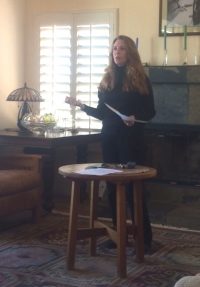 New York Times bestselling author and investigative journalist Caitlin Rother has written or co-authored 10 books, drawing from decades of newspaper experience covering topics ranging from criminal justice, suicide, addiction, mental illness and murder to corruption, incompetence, and waste at City Hall and in Congress. Caitlin, whose books range from narrative non-fiction crime to memoir and crime fiction, has done more than 100 TV and radio appearances. Her latest book, THEN NO ONE CAN HAVE HER, and her Kindle shorts, A Complicated Woman and The Fugitive With One Shoe, were published in 2015 and 2016. She is currently writing another short, Overkill, and a political crime book, HONEST SERVICES?: CORRUPTION, DISORDER AND CRIMINAL INJUSTICE. Caitlin also works as a book doctor, writing-research- promotions coach and consultant, and teaches narrative non-fiction at UCSD Extension and San Diego Writers, Ink. http://caitlinrother.com
New York Times bestselling author and investigative journalist Caitlin Rother has written or co-authored 10 books, drawing from decades of newspaper experience covering topics ranging from criminal justice, suicide, addiction, mental illness and murder to corruption, incompetence, and waste at City Hall and in Congress. Caitlin, whose books range from narrative non-fiction crime to memoir and crime fiction, has done more than 100 TV and radio appearances. Her latest book, THEN NO ONE CAN HAVE HER, and her Kindle shorts, A Complicated Woman and The Fugitive With One Shoe, were published in 2015 and 2016. She is currently writing another short, Overkill, and a political crime book, HONEST SERVICES?: CORRUPTION, DISORDER AND CRIMINAL INJUSTICE. Caitlin also works as a book doctor, writing-research- promotions coach and consultant, and teaches narrative non-fiction at UCSD Extension and San Diego Writers, Ink. http://caitlinrother.com
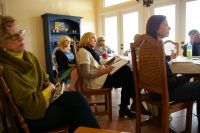 As the editor of three Pulitzer Prize-winning news projects, Susan White is a master craftsperson of narrative nonfiction. After working at the Lexington Herald-Leader as an education reporter and television critic, Susan rose through the ranks of the The San Diego Union-Tribune, from reporter to writing coach, U.S.-Mexico border editor and then enterprise editor. Combining her fictional storytelling and investigative journalism skills to help reporters tell complex stories through narrative, she helped edit her first Pulitzer winning series at the U-T in 2006. She became the first assigning editor at the nonprofit investigative newsroom ProPublica in 2008, where she edited her second winner in 2010. She then became executive editor ofInsideClimate News, where her third project won in 2013. Today she is working with a group of prominent journalists to launch InquireFirst, an investigative reporting non-profit whose goal is to expand the boundaries of traditional journalism. https://inquirefirst.org/
As the editor of three Pulitzer Prize-winning news projects, Susan White is a master craftsperson of narrative nonfiction. After working at the Lexington Herald-Leader as an education reporter and television critic, Susan rose through the ranks of the The San Diego Union-Tribune, from reporter to writing coach, U.S.-Mexico border editor and then enterprise editor. Combining her fictional storytelling and investigative journalism skills to help reporters tell complex stories through narrative, she helped edit her first Pulitzer winning series at the U-T in 2006. She became the first assigning editor at the nonprofit investigative newsroom ProPublica in 2008, where she edited her second winner in 2010. She then became executive editor ofInsideClimate News, where her third project won in 2013. Today she is working with a group of prominent journalists to launch InquireFirst, an investigative reporting non-profit whose goal is to expand the boundaries of traditional journalism. https://inquirefirst.org/
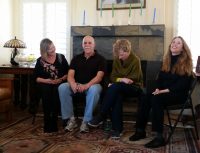
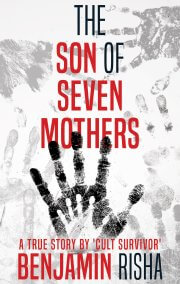

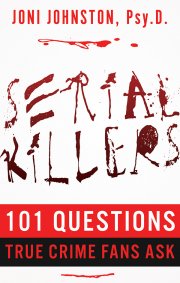
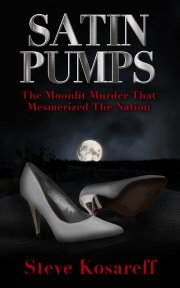
 Join our email list
Join our email list
Leave a Reply